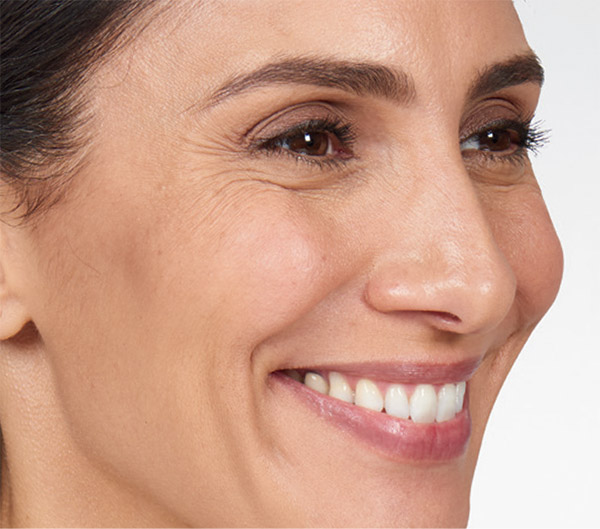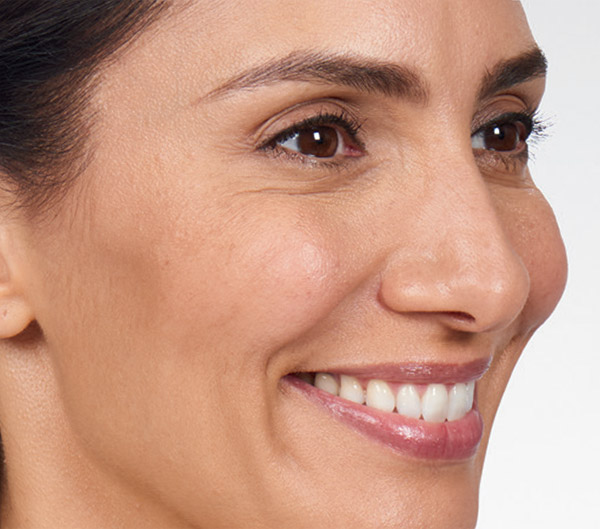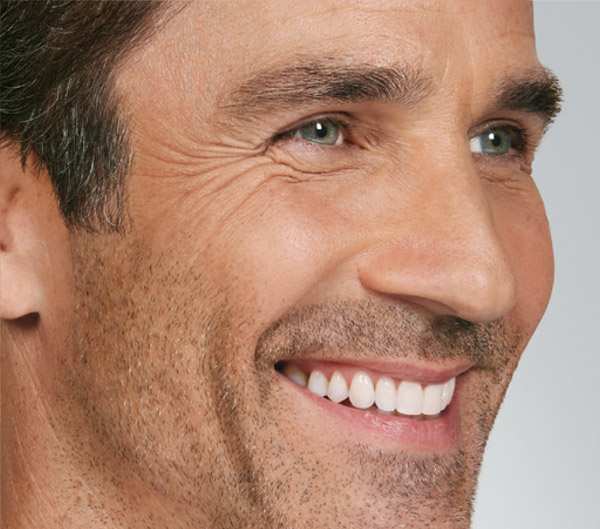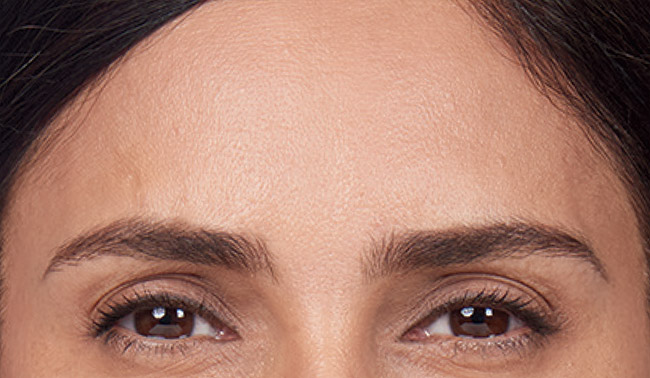Botox in Orange County
Botox in Orange County
Botox remains one of the most popular cosmetic treatments out there and has revolutionized the cosmetics industry when it comes to reducing the appearance of fine lines and wrinkles. It’s a zero downtime way to temporarily eliminate crow’s feet, reduce forehead lines and give your brow or lip a subtle lift. This is on top of an array of potential applications for Botox that your provider will share with you. It’s ideal for those seeking natural-looking results that reduce wrinkles and fine lines over time.
Using minimally-invasive injections of botulinum toxin, Botox temporarily keeps muscle contractions at bay to begin your facial rejuvenation process. If you’re looking for Botox in Orange County or a regular treatment regimen to maintain your results looking fresh, look no further than the Med Lounge.
Benefits of Botox
- Reduces fine lines
- Natural results
- Limits new wrinkles
- Improves fullness
- Zero downtime
- Fast-acting
- Improvement over time
- Extremely safe
- Youthful appearance
- Therapeutic applications
FREQUENTLY ASKED QUESTIONS
Botox is a botulinum toxin that temporarily paralyzes targeted muscles that cause wrinkles and fine lines. While it’s become more commonly used in the past fifteen years, the injectable has actually been around since 1989.
Whenever we move and contract our facial muscles, whether we’re squinting in the sunlight or beaming with joy, that can set the stage for wrinkles down the line. Wrinkles are difficult to prevent, as we lead dynamic lives that means dynamic facial expressions.
Botox works by relaxing and temporarily keeping those muscles from moving, preventing more wrinkling on top of what you’re already dealing with. As a result, Botox users enjoy smoother skin and, over time and with repeated treatments, fewer wrinkles overall.
Botox is the perfect cosmetic treatment for anyone looking to both smooth out existing wrinkles and fine lines or prevent wrinkles in targeted areas of the face. Botox can be used to treat crow’s feet, smooth frown lines, even give your brows a subtle lift.
It’s even the preferred treatment for many younger patients in their 20s and early 30s looking for preventative measures for wrinkles down the line. Botox can also be used to add a bit of fullness to a fine upper lip. This is also known as the lip flip, and it can be a more subtle lip enhancement than fillers.
Finally, Botox has several therapeutic uses, including preventing excessive sweating, eye spasms, overactive bladders and chronic migraines. It truly is an impressive injectable.
Part of the appeal of Botox is how quickly you can get in and out of the office for a treatment. Including a consultation to explore what you’re hoping to achieve with your Botox treatment, your entire appointment should be finished within 20 minutes.
As far as the treatment itself, most Botox fans report little pain during the procedure. If you’re sensitive to pain, a topical anesthetic can make your treatment more comfortable. Once it’s done, you’ll be free to go about your day without the downtime required with surgical procedures.
It’s quick and virtually painless for most, offering you noticeable results starting two to three days after your treatment.
It depends. At the Med Lounge, our pricing structure is based on the number of units you need to achieve your results. How much Botox you’ll need will depend on the areas you’re looking to treat and factors that vary from person to person. Someone with deep-set wrinkles between their eyebrows will need more units than someone looking to smooth out the appearance of fine lines around their lips.
If you’re not sure whether Botox is for you, consultations are free. We can develop a personalized plan, including pricing, that will have you feeling your best in no time.
For most people, Botox lasts about three months. It lends itself to a membership package, as routine maintenance can be a preventative for wrinkles down the line. Some consistent users find that their treatment can last up to 6 months.
See the amazing difference in our clients, before and after treatment.
 BEFORE
BEFORE
 AFTER
AFTER
 BEFORE
BEFORE
 AFTER
AFTER
 BEFORE
BEFORE
 AFTER
AFTER
 BEFORE
BEFORE
 AFTER
AFTER
What to expect with botox
For the best results and to reduce the chance of any side effects after your treatment, our experts at the Med Lounge have a few tips around what to expect with Botox before and after your procedure.
PRE-TREATMENT
Let your doctor know if you have a history of cold sores. You’ll need a prescription to get rid of any active infection or prevent an infection after your treatment.
Avoid any anti-inflammatories or blood-thinning medications up to two weeks before your treatment. Those include but aren’t limited to aspirin, Motrin, ibuprofen, and Aleve. If you take daily aspirin for a history of heart disease, talk to your doctor before stopping your aspirin routine.
Avoid any herbal supplements up to two weeks before your treatment. Those include but aren’t limited to garlic, ginseng, vitamin E, omega-3, fish oil, ginkgo biloba and St. John’s Wort
Try to avoid scheduling any special events in the two weeks after your Botox injections. Some Botox patients report swelling and bruising in treatment areas, which will subside within a few days in most cases.
Avoid drinking alcohol the week of your treatment.Nibh tortor id aliquet lectus proin nibh nisl condimentum.
Consider taking Arnica tablets several days ahead of your treatment. Arnica could help prevent bruising at your injection sites.
Arrive at your appointment fresh-faced. That means no makeup and no topical creams. Your provider would remove anything you’ve applied anyway ahead of your Botox injections.
POST-TREATMENT
Avoid touching or massaging your face in the first 4 hours after your Botox injections.
Your provider may suggest facial exercises in the 30 minutes after your treatment to allow the injections to work their way into the targeted muscles. This can look like frowning or squinting and is about as intense a workout as you should have for at least 4 hours after treatment.
While you’re at it, avoid any heavy lifting, saunas or anything that will strain your muscles too intensely in the 4 hours after treatment.
Avoid applying makeup to your face the day of your treatment. The new fresh-faced you won’t need it anyway. If you had Botox injections in your forehead or between your eyebrows, avoid hats or headbands the day of your treatment, as well.
Some swelling or redness is a normal reaction and should resolve within a few days after treatment.
Give yourself at least two weeks before any facials or additional cosmetic treatments. Allow up to 10 days for full results to take effect before calling your doctor’s office for a touchup of injections.
Call your doctor if you have any serious side effects, such as increased pain or swelling, muscle weakness or breathing problems. Some redness, swelling or bruising at the injection site is all normal and temporary.
Safety Information
BOTOX® Cosmetic (onabotulinumtoxinA) Important Information
Indications
BOTOX® Cosmetic (onabotulinumtoxinA) is indicated in adult patients for the temporary improvement in the appearance of:
– Moderate to severe glabellar lines associated with corrugator and/or procerus muscle activity
– Moderate to severe lateral canthal lines associated with orbicularis oculi activity
– Moderate to severe forehead lines associated with frontalis activity
IMPORTANT SAFETY INFORMATION, INCLUDING BOXED WARNING
WARNING: DISTANT SPREAD OF TOXIN EFFECT
Postmarketing reports indicate that the effects of BOTOX® Cosmetic and all botulinum toxin products may spread from the area of injection to produce symptoms consistent with botulinum toxin effects. These may include asthenia, generalized muscle weakness, diplopia, ptosis, dysphagia, dysphonia, dysarthria, urinary incontinence, and breathing difficulties. These symptoms have been reported hours to weeks after injection. Swallowing and breathing difficulties can be life threatening and there have been reports of death. The risk of symptoms is probably greatest in children treated for spasticity, but symptoms can also occur in adults treated for spasticity and other conditions, particularly in those patients who have an underlying condition that would predispose them to these symptoms. In unapproved uses and approved indications, cases of spread of effect have been reported at doses comparable to those used to treat cervical dystonia and spasticity and at lower doses.
CONTRAINDICATIONS
BOTOX® Cosmetic is contraindicated in the presence of infection at the proposed injection site(s) and in individuals with known hypersensitivity to any botulinum toxin preparation or to any of the components in the formulation.
WARNINGS AND PRECAUTIONS
Lack of Interchangeability Between Botulinum Toxin Products
The potency units of BOTOX® Cosmetic are specific to the preparation and assay method utilized. They are not interchangeable with other preparations of botulinum toxin products and, therefore, units of biological activity of BOTOX® Cosmetic cannot be compared to nor converted into units of any other botulinum toxin products assessed with any other specific assay method.
Spread of Toxin Effect
Please refer to Boxed Warning for Distant Spread of Toxin Effect.
No definitive serious adverse event reports of distant spread of toxin effect associated with dermatologic use of BOTOX® Cosmetic at the labeled dose of 20 Units (for glabellar lines), 24 Units (for lateral canthal lines), 40 Units (for forehead lines with glabellar lines), 44 Units (for simultaneous treatment of lateral canthal lines and glabellar lines), and 64 Units (for simultaneous treatment of lateral canthal lines, glabellar lines, and forehead lines) have been reported. Patients or caregivers should be advised to seek immediate medical care if swallowing, speech, or respiratory disorders occur.
Serious Adverse Reactions With Unapproved Use
Serious adverse reactions, including excessive weakness, dysphagia, and aspiration pneumonia, with some adverse reactions associated with fatal outcomes, have been reported in patients who received BOTOX® injections for unapproved uses. In these cases, the adverse reactions were not necessarily related to distant spread of toxin, but may have resulted from the administration of BOTOX® to the site of injection and/or adjacent structures. In several of the cases, patients had pre-existing dysphagia or other significant disabilities. There is insufficient information to identify factors associated with an increased risk for adverse reactions associated with the unapproved uses of BOTOX®. The safety and effectiveness of BOTOX® for unapproved uses have not been established.
Hypersensitivity Reactions
Serious and/or immediate hypersensitivity reactions have been reported. These reactions include anaphylaxis, serum sickness, urticaria, soft-tissue edema, and dyspnea. If such reactions occur, further injection of BOTOX® Cosmetic should be discontinued and appropriate medical therapy immediately instituted. One fatal case of anaphylaxis has been reported in which lidocaine was used as the diluent and, consequently, the causal agent cannot be reliably determined.
Cardiovascular System
There have been reports following administration of BOTOX® of adverse events involving the cardiovascular system, including arrhythmia and myocardial infarction, some with fatal outcomes. Some of these patients had risk factors including pre-existing cardiovascular disease. Use caution when administering to patients with pre-existing cardiovascular disease.
Increased Risk of Clinically Significant Effects With Pre-existing Neuromuscular Disorders
Individuals with peripheral motor neuropathic diseases, amyotrophic lateral sclerosis, or neuromuscular junction disorders (eg, myasthenia gravis or Lambert-Eaton syndrome) should be monitored when given botulinum toxin. Patients with neuromuscular disorders may be at increased risk of clinically significant effects including generalized muscle weakness, diplopia, ptosis, dysphonia, dysarthria, severe dysphagia, and respiratory compromise from onabotulinumtoxinA (see Warnings and Precautions).
Dysphagia and Breathing Difficulties
Treatment with BOTOX® and other botulinum toxin products can result in swallowing or breathing difficulties. Patients with pre-existing swallowing or breathing difficulties may be more susceptible to these complications. In most cases, this is a consequence of weakening of muscles in the area of injection that are involved in breathing or oropharyngeal muscles that control swallowing or breathing (see Boxed Warning).
Pre-existing Conditions at the Injection Site
Caution should be used when BOTOX® Cosmetic treatment is used in the presence of inflammation at the proposed injection site(s) or when excessive weakness or atrophy is present in the target muscle(s).
Dry Eye in Patients Treated With BOTOX® Cosmetic
There have been reports of dry eye associated with BOTOX® Cosmetic injection in or near the orbicularis oculi muscle. If symptoms of dry eye (eg, eye irritation, photophobia, or visual changes) persist, consider referring patients to an ophthalmologist.
Human Albumin and Transmission of Viral Diseases
This product contains albumin, a derivative of human blood. Based on effective donor screening and product manufacturing processes, it carries an extremely remote risk for transmission of viral diseases and variant Creutzfeldt-Jakob disease (vCJD). There is a theoretical risk for transmission of Creutzfeldt-Jakob disease (CJD), but if that risk actually exists, the risk of transmission would also be considered extremely remote. No cases of transmission of viral diseases, CJD or vCJD have ever been identified for licensed albumin or albumin contained in other licensed products.
ADVERSE REACTIONS
The most frequently reported adverse reactions following injection of BOTOX® Cosmetic for glabellar lines were eyelid ptosis (3%), facial pain (1%), facial paresis (1%), and muscular weakness (1%).
The most frequently reported adverse reaction following injection of BOTOX® Cosmetic for lateral canthal lines was eyelid edema (1%).
The most frequently reported adverse reactions following injection of BOTOX® Cosmetic for forehead lines with glabellar lines were headache (9%), brow ptosis (2%), and eyelid ptosis (2%).
DRUG INTERACTIONS
Co-administration of BOTOX® Cosmetic and aminoglycosides or other agents interfering with neuromuscular transmission (eg, curare-like compounds) should only be performed with caution as the effect of the toxin may be potentiated. Use of anticholinergic drugs after administration of BOTOX® Cosmetic may potentiate systemic anticholinergic effects.
The effect of administering different botulinum neurotoxin products at the same time or within several months of each other is unknown. Excessive neuromuscular weakness may be exacerbated by
administration of another botulinum toxin prior to the resolution of the effects of a previously administered botulinum toxin.
Excessive weakness may also be exaggerated by administration of a muscle relaxant before or after administration of BOTOX® Cosmetic.
USE IN SPECIFIC POPULATIONS
There are no studies or adequate data from postmarketing surveillance on the developmental risk associated with use of BOTOX® Cosmetic in pregnant women. There are no data on the presence of BOTOX® Cosmetic in human or animal milk, the effects on the breastfed child, or the effects on milk production.
Please see BOTOX® Cosmetic full Prescribing Information including Boxed Warning and Medication Guide.